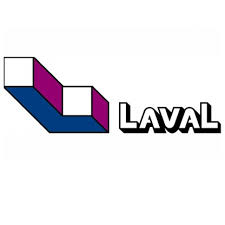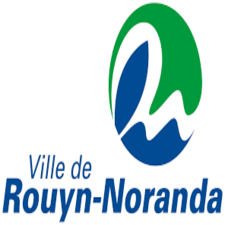Rivers
Type of resources
Available actions
Topics
Keywords
Contact for the resource
Provided by
Years
Formats
Representation types
Update frequencies
status
Service types
Scale
-
This dataset was developed to provide a complete record of salmon rivers within the province of Newfoundland and Labrador. It is organized by DFO detachment area and can be used for resource planning and management purposes. It is suitable for general mapping, visualization and query. It is derived from the National Hydro Network (NHN) data. The geodatabase contains feature datasets for each of the 8 DFO detachments in Newfoundland and Labrador (Bay Roberts, Clarenville, Goose Bay, Marystown, Rocky Harbour, Springdale, Stephenville, Twillingate). Each of the feature datasets contain 4 feature classes that describe aspects of the salmon rivers within each detachment area. The RiverBasins feature class contains polygons outlining the extent of each of the salmon river watersheds that fall within that DFO detachment area. Polygons were delineated using provincial DEMs, National Hydro Network (NHN) river features, the DFO detachment area boundary, and tools contained in the ArcHydro toolset for ArcPro GIS software. The SalmonNetwork feature class contains lines which show the flow (undirected) of the river network through each of the salmon river watersheds that fall within that DFO detachment area. The flow is depicted by lines that run through rivers and streams and through waterbodies. The lines were imported from the National Hydro Network (Primary Directed Flow feature class) and then organized by salmon river watershed, to create a dataset with one line feature for each watershed. The SalmonRivers feature class contains lines which show salmon rivers within each of the salmon river watersheds that fall within that DFO detachment area. The lines were imported from the National Hydro Network (SLWater feature class) and then organized by salmon river watershed, to create a dataset with one line feature for each watershed. Only "single-line" rivers are included. Larger, "two-sided" rivers are depicted as polygons in the "Salmon Waterbodies" dataset. This SalmonWaterbodies feature class contains polygons which show salmon waterbodies within each of the salmon river watersheds that fall within that DFO detachment area. The polygons were imported from the National Hydro Network (Waterbody feature class) and then organized by salmon river watershed, to create a dataset with one polygon feature for each watershed. Larger, "two-sided" rivers are also depicted as polygons in the "Salmon Waterbodies" dataset. The geodatabase contains attribute information on the name, zone and class of each salmon river as reflected in the following documents: (i) Anglers' Guide - Scheduled Salmon Rivers of Newfoundland and Labrador and (ii) Conservation and Protection - Scheduled Salmon Rivers & DFO Detachment Regions Newfoundland and Labrador. It also provides links to online information on current in-season status
-

Mapping of open water courses located inside the islands of the Laval territory.**This third party metadata element was translated using an automated translation tool (Amazon Translate).**
-

The main objective of this sampling program was to assess the effects of the spill on the toxicity of surface water collected during the spill by comparing them with the results of water collected prior to the discharge.**This third party metadata element was translated using an automated translation tool (Amazon Translate).**
-

Data from the RUISSO program, bacteriological and physicochemical quality of streams and inland water bodies in the Montreal agglomeration, from the Aquatic Environment Monitoring Network. An [interactive map] (https://experience.arcgis.com/experience/38d7c7bb43da4e2082aa836689d0d318/) is also available.**This third party metadata element was translated using an automated translation tool (Amazon Translate).**
-

SAMPLING POINTS FOR THE QUALO program, shoreline water quality of the aquatic environment monitoring network.**This third party metadata element was translated using an automated translation tool (Amazon Translate).**
-

Linear hydrographic network of the City of Rouyn-Noranda. The ditches of drainage is not included. **This third party metadata element was translated using an automated translation tool (Amazon Translate).**
-
This dataset uses RADARSAT Constellation Mission (RCM) Synthetic Aperture Radar (SAR) satellite images to identify open water regions within ice-covered rivers during winter, with the aim to assess hydrokinetic resources near remote communities reliant on diesel fuel for electricity generation. The data is processed with the HyRASS, a machine learning-based SAR image processing and classification algorithm. Disclaimer: This dataset was designed to identify open water regions within ice-covered rivers for assessing hydrokinetic resources near remote communities reliant on diesel fuel for electricity generation and is subject to the following limitations: • This dataset was derived from RADARSAT Constellation Mission (RCM) Synthetic Aperture Radar (SAR) satellite images. While these images are generally reliable, they are subject to inherent limitations, including resolution constraints, potential distortion, and occasional inaccuracies in real-time conditions capture. • The HyRASS algorithm is designed to pinpoint open water areas using satellite images, with a particular emphasis on RCM quad polarization (QP) imagery. This specialization means that its effectiveness depends on the accessibility of this specific type of imagery. Consequently, the data it produces might not cover a broad spectrum of time periods. For more reliable results, it's essential to classify areas more regularly, ensuring that detected open water regions are consistent over time. This dataset is intended for preliminary assessment and should not be the sole basis for making critical decisions or investments related to hydrokinetic energy projects. Further validation and in-depth analysis are strongly recommended, and users should conduct their own due diligence and additional research to verify the data accuracy and relevance for specific applications. By accessing and using this dataset, users acknowledge and accept these disclaimers. The providers of this dataset explicitly absolve themselves of any responsibility or liability for any consequences arising from the use, reliance upon, or interpretation of this dataset. Users are advised that their use of the dataset is at their own risk, and they assume full responsibility for any actions or decisions made based on the information contained therein. This disclaimer is in accordance with applicable laws and regulations, and by accessing or utilizing the dataset, users agree to release the providers of this dataset from any legal claims, damages, or liabilities that may arise from such use.
-
This product provides the boundaries for the 25 drainage regions in Canada and the five ocean drainage areas. These drainage regions cover all of the area within the coastal boundaries of Canada. These files were produced by Statistics Canada, Environment, Energy and Transportation Statistics Division, 2009, special tabulation of data from Pearse, P.H., F. Bertrand and J.W. MacLaren, 1985, Currents of Change: Final Report of the Inquiry on Federal Water Policy, Environment Canada, Ottawa.
-

RUISSO program sampling points, stream water quality, Aquatic environment monitoring network.**This third party metadata element was translated using an automated translation tool (Amazon Translate).**
-

COURDO SPÉCIAL program sampling points, watercourse quality, Aquatic environment monitoring network.**This third party metadata element was translated using an automated translation tool (Amazon Translate).**
 Arctic SDI catalogue
Arctic SDI catalogue